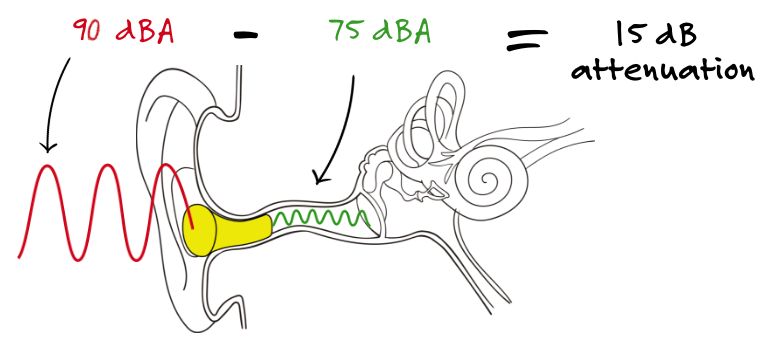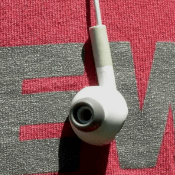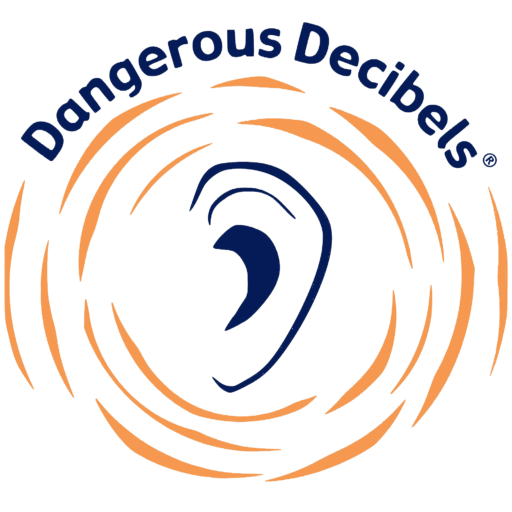Attenuation

The attenuation of the ear plug can be calculated by simple subtraction: 90 dBA – 75 dBA = 15 dB of attenuation.

Sometimes you can provide too much attenuation, and then the person will have trouble communicating with others and feel isolated while wearing hearing protection. Ideally, the earplug or earmuff would not reduce the sound in the ear canal below 70 dBA.
Package Labeling
Some earplugs and earmuffs are labeled with a noise reduction number or rating on the packaging. However, these laboratory attenuation measurements do not reflect what an individual person achieves in real life when worn on their own ears. So, it is best to pick the type of earplug or earmuff that seals the ear well and feels comfortable when worn. Avoid choosing a hearing protector based on a number on the package, since this is a laboratory number that doesn’t relate to real life performance of the earplug or earmuff. Each person will have their own preference for what type of hearing protector fits the best.
Audiologists and Health & Safety professionals can measure how well an earplug or earmuff is working using special equipment if you want to confirm that your protection is adequate for your noise exposure. If you work in a noisy job and are required to wear hearing protection, you can ask your employer or health and safety manager about getting hearing protector “fit-testing” done.
Mythbuster
 True or False: Earphones are not hearing protection.
True or False: Earphones are not hearing protection.True! Music earphones alone may not block dangerous sound from outside sources (like a lawnmower) from getting into your ears. You would likely have to turn the music up to a high volume to be able to hear it well.
You can listen to your music at a lower volume (safer) when putting earmuffs over the top of your earphones because the earmuffs will block the outside sounds (lawnmower).
There are even earmuffs that have input jacks for your music player or smartphone, and some even have FM or AM radio built-in.


